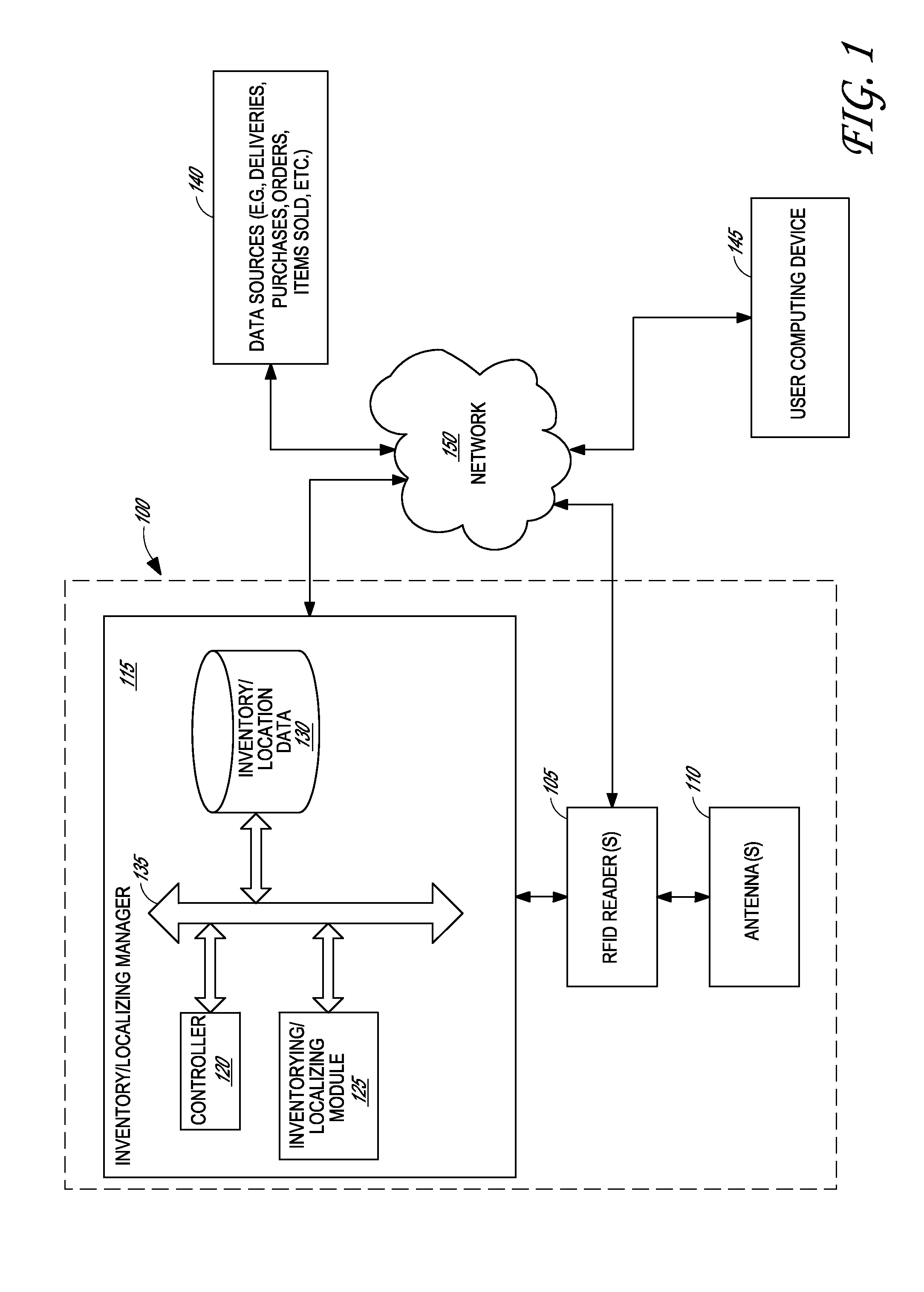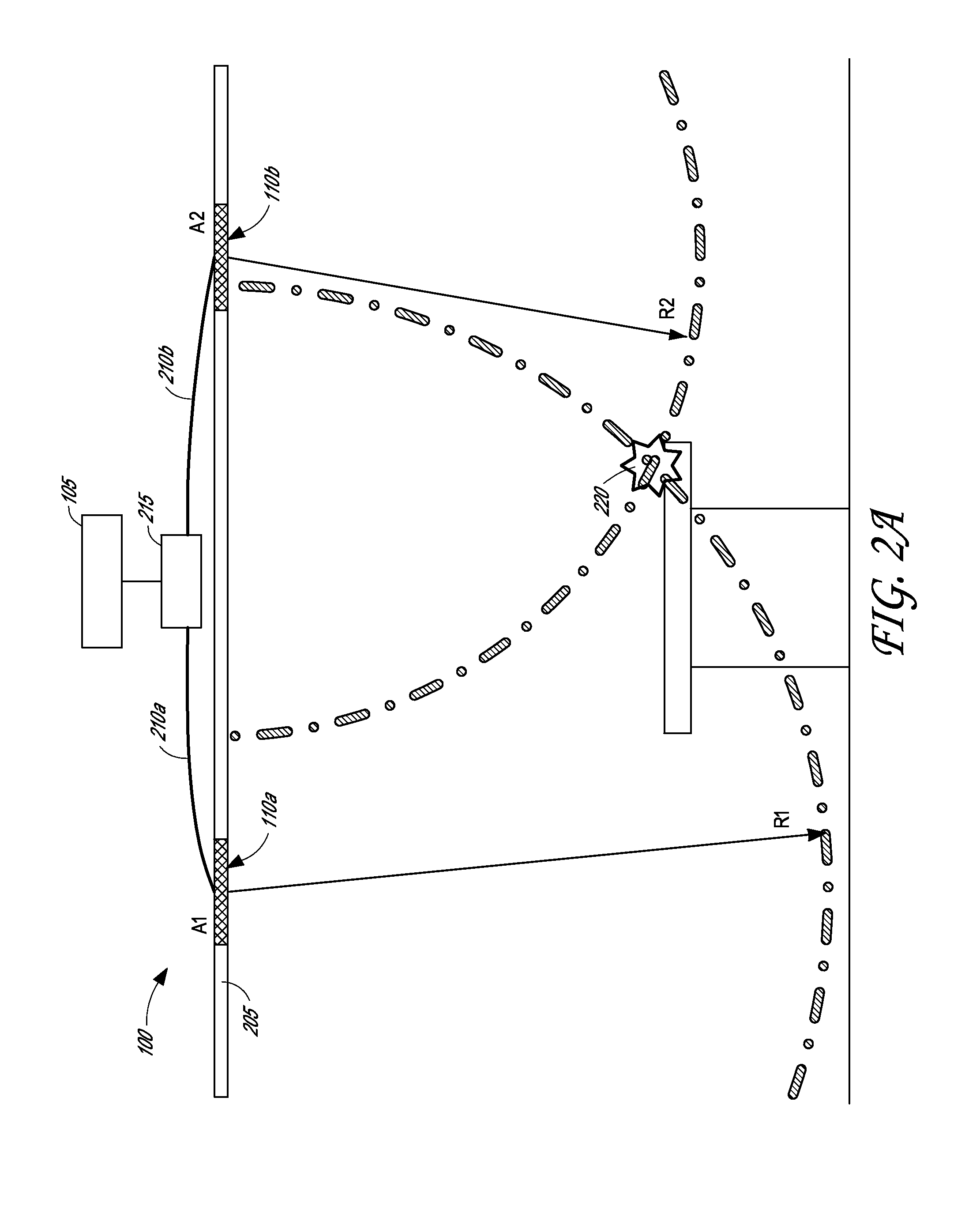Overhead antenna live inventory locating system
a technology of inventory locating and overhead antenna, applied in the field of inventory systems and methods, can solve the problems of impede the operation of the store, the method of inventorying electronic tags has a margin of error, and the rfid reader can miss, so as to reduce the effect of reducing the distance to the antenna and less effectiv
- Summary
- Abstract
- Description
- Claims
- Application Information
AI Technical Summary
Benefits of technology
Problems solved by technology
Method used
Image
Examples
example patch
Antenna Mounted in a Ceiling Tile
[0084]FIG. 7 illustrates an example of a patch antenna 700 mounted to a ceiling tile 710 according to some embodiments. The patch antenna 700 comprises a patch antenna housing 705 that can be mounted to a ceiling tile 710. The patch antenna 700 can be part of an overhead antenna inventory / locating system as described herein above. The patch antenna 700 can be coupled to an RFID reader through cable 720. The cable 720 can be configured to provide electromagnetic signals sufficient to drive the antenna 700 at the desired frequency, power, and polarization. The cable 720 can be configured to convey signals to the RFID reader from the antenna 700.
[0085]The patch antenna 705 can be mounted to the ceiling tile 710, for example, using mounting interfaces 715. In some embodiments, the patch antenna housing 705 can be mounted to the ceiling tile 710 using a permanent connection such as, for example, adhesives, thermal bonding, welding, clamps, friction, faste...
PUM
| Property | Measurement | Unit |
|---|---|---|
| frequency | aaaaa | aaaaa |
| frequency | aaaaa | aaaaa |
| frequency | aaaaa | aaaaa |
Abstract
Description
Claims
Application Information
 Login to View More
Login to View More - R&D
- Intellectual Property
- Life Sciences
- Materials
- Tech Scout
- Unparalleled Data Quality
- Higher Quality Content
- 60% Fewer Hallucinations
Browse by: Latest US Patents, China's latest patents, Technical Efficacy Thesaurus, Application Domain, Technology Topic, Popular Technical Reports.
© 2025 PatSnap. All rights reserved.Legal|Privacy policy|Modern Slavery Act Transparency Statement|Sitemap|About US| Contact US: help@patsnap.com



